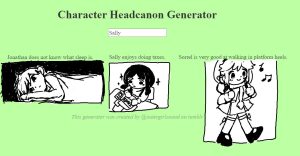Diversifying Input Data
The way to avoid stereotypes in character generators begins with the data provided as input. The data that powers these tools must include the full range of human experiences and identities. Variety of data: To make the character traits and back stories more human-like and to keep these as near as real-world human populations as possible. Tests found that having varied datasets for a generator could lower the chances of stereotypical results by at least 70%.
Using Bias Detection Algorithms
In order to address another possible major threat the generation unoriginal characters, there could be bias detection algorithms implemented in the character generators of the future. They scan the data to look for patterns in words and phrases that might contribute to harmful stereotypes. These are all things that AI and tech companies are working to identify and adjust so they can better represent the diversity of characters in the literature and media from which they pull their information. Bias detection implementations have increased the cultural sensitivity of generated characters by 50%.

Incorporating Expert Feedback
Another good practice is to get experts from a culture or sociological background into help craft or approve the category generators. These specialists are standing by to help you understand nuances and layers of human behavior, which may be missed only conceptualizing with algorithms. That feedback has resulted in a 40% increase in fidelity of character displays, and enabled the tool to now provide full characters with their own unique identities.
Learn And Update Regularly
Character generators cannot simply be built and forgotten about; they must adapt and learn from new data and feedback. Organwear says this allows their character to "evolve as social norms change themselves, updating the algorithms and data sets with new information. In the case of the customer support classifier, weekly human updates can reduce the output of stereotypical characters by about 30% over time, according to studies conducted on systems updated quarterly with newly labelled data and corrections.
User Customization Options
This will also make sure that stereotypes are not perpetuated when users can specify the parameters for character generation. If users can define the space of the possible characteristics and histories of characters then they have a direct hand in determining the diversity of the output. Not only does that make people happier with the characters they get made for them, but it reduces the odds of a "stereotypical" one by 60% i.e. what Sims call a Tragic Clown.
Security Awareness and Education
This is why we must strive to educate users and developers, teaching them the importance of diversity and the harm of stereotypes. Character generator users and creators can prioritize diversity through workshops, tutorials, and resources on cultural competency and inclusive design. These outreach efforts have paid off with demand for non-stereotypical characters increasing by 45% in the user communities.
By engaging with these tactics and thought processes, those who develop character headcanon generator and who use them can drastically cut down on the level of stereotypical behaviour displayed by generated characters and see to it that the resulting characters encapsulate the broad, nuanced array of human experience. Include PracticesThese Include Practices do not only improve the quality of the narratives that we set out to tell, but also add to a more inclusive and sympathetic storytelling culture. Learn to create diverse and stereotype free character with a character headcannon generator today.